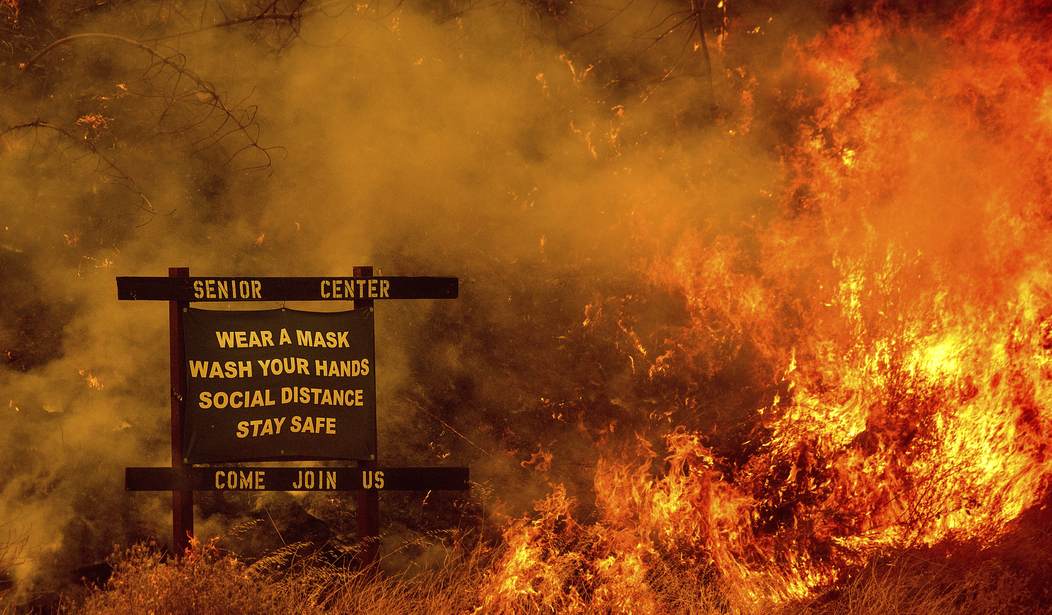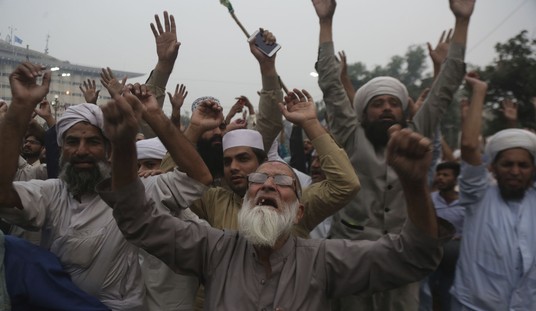The destructive California wildfires are a reminder of Francis Bacon’s observation that “nature to be commanded must first be obeyed.” When political environmentalism tries to impose its will on nature, it will make you pay.
“Fires have always been part of our ecosystem,” said Mike Rogers, a former Angeles National Forest supervisor and board member of the National Association of Forest Service Retirees. “Forest management is a lot like gardening. You have to keep the forest open and thin.” …
Long before the country’s founding, Spanish explorers documented wildland fires in California. In 1542, conquistador Juan Rodríguez Cabrillo sailed along the coast and noticed smoke billowing up from what is now known as the Los Angeles Basin. He called it “la baya de los fumos,” or “the bay of smoke.”
Studies by archaeologists and historians support a theory that Cabrillo might have been witnessing an early form of land management, including the burning of shrubs and chaparral to clear dry brush and promote better conditions for hunting big game. …
Prescribed and controlled burns were integral to the American landscape for generations. In 1910, focus started to shift away from forest management and steer toward fire suppression … The state’s policy to stop fires as soon as they ignite resulted in a backlog of trees in forests now choked with brush and other dry fuels.
The costs required to keep the forests from ever burning are potentially huge. “Year after year, environmentalists litigated and lobbied to stop efforts to clear the forests through timber harvesting, underbrush removal, and controlled burns. … What happened among California’s tall stands of Redwood and Ponderosa Pine also happened in its extensive chaparral. Fire suppression along with too many environmentalist-inspired bureaucratic barriers to controlled burns and undergrowth removal turned the hillsides and canyons of Southern California into tinderboxes.”
The costs of keeping the unwilling onside are even bigger. The American scene is also illuminated by fire of another kind: the incandescent efforts of those who want to return Washington to the 2016 normal over those determined to continue a revolution in the capital. But a political scene lit with the flames of burning personal bridges is less a sign of imminent triumph than with stalemate and retreat. The principle is illustrated by China’s physical assault on Taiwanese diplomats in Fiji.
Taiwan’s ministry of foreign affairs said two Chinese embassy officials arrived at the Grand Pacific hotel uninvited and began “harassing” and trying to photograph the guests which included Fijian ministers, foreign diplomats, NGO representatives and members of Fiji’s ethnic Chinese community.
Taiwanese staff confronted the officials and a fight broke out, with one Taiwanese official injured severely enough that he required treatment at hospital for head injuries, Taiwan’s ministry and multiple sources at the scene said. Police were called to the hotel but sources have told the Guardian the Chinese officials claimed diplomatic immunity.
Taiwan accused the Chinese officials of falsely telling Fijian police they had been attacked by the Taiwanese personnel and said it “strongly condemned the serious violations of the rule of law and civilised norms by the staff of the Chinese embassy in Fiji.”
The brawl revokes the conventional wisdom that Taiwan was destined to be absorbed by China, it being only a matter of time. Beijing’s resort to Brownshirt tactics at a Fijian reception is a confession that the once inevitable unification can now only be guaranteed by force.
China’s leader, Xi Jinping, has long tried to convince Taiwan that unification was a historical inevitability, alternately enticing the democratic island with economic incentives while bluntly warning that any move toward formal independence would be answered with military force.
Now, the incentives are gone and the warnings seem more ominous following Mr. Xi’s swift move to strengthen China’s grip on Hong Kong, a semiautonomous territory that only last year he held out as a model for Taiwan’s future.
Or take what is even more starkly illustrated by China’s threat to take American hostages if its spies in the US are not released. “Chinese government officials are warning their American counterparts they may detain U.S. nationals in China in response to the Justice Department’s prosecution of Chinese military-affiliated scholars, according to people familiar with the matter.”
The Chinese message, the people said, has been blunt: The U.S. should drop prosecutions of the Chinese scholars in American courts, or Americans in China might find themselves in violation of Chinese law.
China started issuing the warning this summer after the U.S. began arresting a series of Chinese scientists, who were visiting American universities to conduct research, and charged them with concealing from U.S. immigration authorities their active duty statuses with the People’s Liberation Army, the people said.
The resort to threats instead of consent that was formerly granted by the host country is not a sign of Beijing’s strength but growing weakness. Similarly, the prospects of the liberal project to remake America have declined because an agenda that was once “inevitably” advancing must now be actively imposed on a conscious opposition. The burning of bridges in 2020 means it must now spend enormous amounts of energy for every inch it wants to gain.
Cost is an important consideration in the feasibility of an undertaking. It takes a lot of firefighting to force the forests not to burn. It will take more force than used in the Middle East wars to make Taiwan accept Beijing. It may take more than Beijing has to force America to give Chinese military students a free hand. And it will take a lot to push the progressive project on to the newly unwilling.
The only chance to suppress the populist rebellion cheaply was through something like Crossfire Hurricane. But it failed and now the progressive project is facing what is at best a protracted campaign, a long slow slog that may prove too expensive for even them to mount.
If that enterprise seemed formerly viable it was because it could command enough assent through the application of nudges and prestige to make way. But those powers to persuade have been expended in the bitter acrimony. The prestige well is dry and friction has gone way up. What changed was that the progressive project lost its ability to compromise with those it would govern, compromise not merely of a feigned tactical kind but the genuine ability to change course when it was wrong. Somebody once said a side could always achieve success for as long as it didn’t demand victory. The trouble with progressive ideologues was that in pursuing their vision they couldn’t give up total victory. And so the fires burn.
Follow Wretchard on Twitter or visit Wretchard.com
‘This Is No House of God!’ Black Lives Matter Activists Yell as They Harass Church in Upstate NY
Did Nancy Pelosi Just Condone Mob Rule?
Support the Belmont Club by purchasing from Amazon through the links below.
Life improvement
Google Pixel 4 64GB Clearly White
eufy by Anker, BoostIQ RoboVac 11S (Slim), Robot Vacuum Cleaner
Dyson V11 Animal Cordless Vacuum Cleaner
Carex Health Brands Light Therapy Lamp
Books:
Atlas of World War II: History’s Greatest Conflict Revealed Through Rare Wartime Maps and New Cartography by Stephen G. Hyslop (author) and Neil Kagan (editor)
This magnificent atlas delves into the cartographic history of WWII: naval, land, and aerial attacks from the invasion of Poland to Pearl Harbor and the Battle of the Bulge. Rare maps include a detailed Germany & Approaches map used by Allied forces in the final stages of the war, full large-scale wartime maps of the world used by President Roosevelt, and crucial Pacific theater maps used by B-17 pilots, as well as rare items like playing cards with backs that POWs could peel off to reveal escape maps printed on tissue paper. Satellite data renders terrain as never before seen, highlighting countries and continents in stunning detail to include the towns, cities, provinces and transportation roads for a pinpoint-accurate depiction of army movements and alliances. Hyslop includes gripping wartime stories from these hallowed fields of battle, along with photographs, sketches, confidential documents, and artifacts.
The Thirty-Year Genocide: Turkey’s Destruction of Its Christian Minorities, 1894–1924 by Benny Morris and Dror Ze’evi
Between 1894 and 1924, three waves of violence swept across Anatolia, targeting the region’s Christian minorities (the Armenians, Assyrians and Greeks), who had previously accounted for 20 percent of the population but by 1924 had been reduced to 2 percent. This is the first account to show that the three, which previous histories had treated as isolated events, were actually part of a single, continuing, and intentional effort to wipe out Anatolia’s Christian population.
For a list of books most frequently purchased by readers, visit my homepage.
Did you know that you can purchase some of these books and pamphlets by Richard Fernandez and share them with your friends? They will receive a link in their email and it will automatically give them access to a Kindle reader on their smartphone, computer or even as a web-readable document.
Open Curtains by George Spix and Richard Fernandez. Technology represents both unlimited promise and menace. Which transpires depends on whether people can claim ownership over their knowledge or whether human informational capital continues to suffer the Tragedy of the Commons.
The War of the Words, Understanding the crisis of the early 21st century in terms of information corruption in the financial, security and political spheres
Rebranding Christianity, or why the truth shall make you free
The Three Conjectures, reflections on terrorism and the nuclear age
Storming the Castle, why government should get small
No Way In at Amazon Kindle. Fiction. A flight into peril, flashbacks to underground action.
Storm Over the South China Sea, how China is restarting history in the Pacific.










Join the conversation as a VIP Member